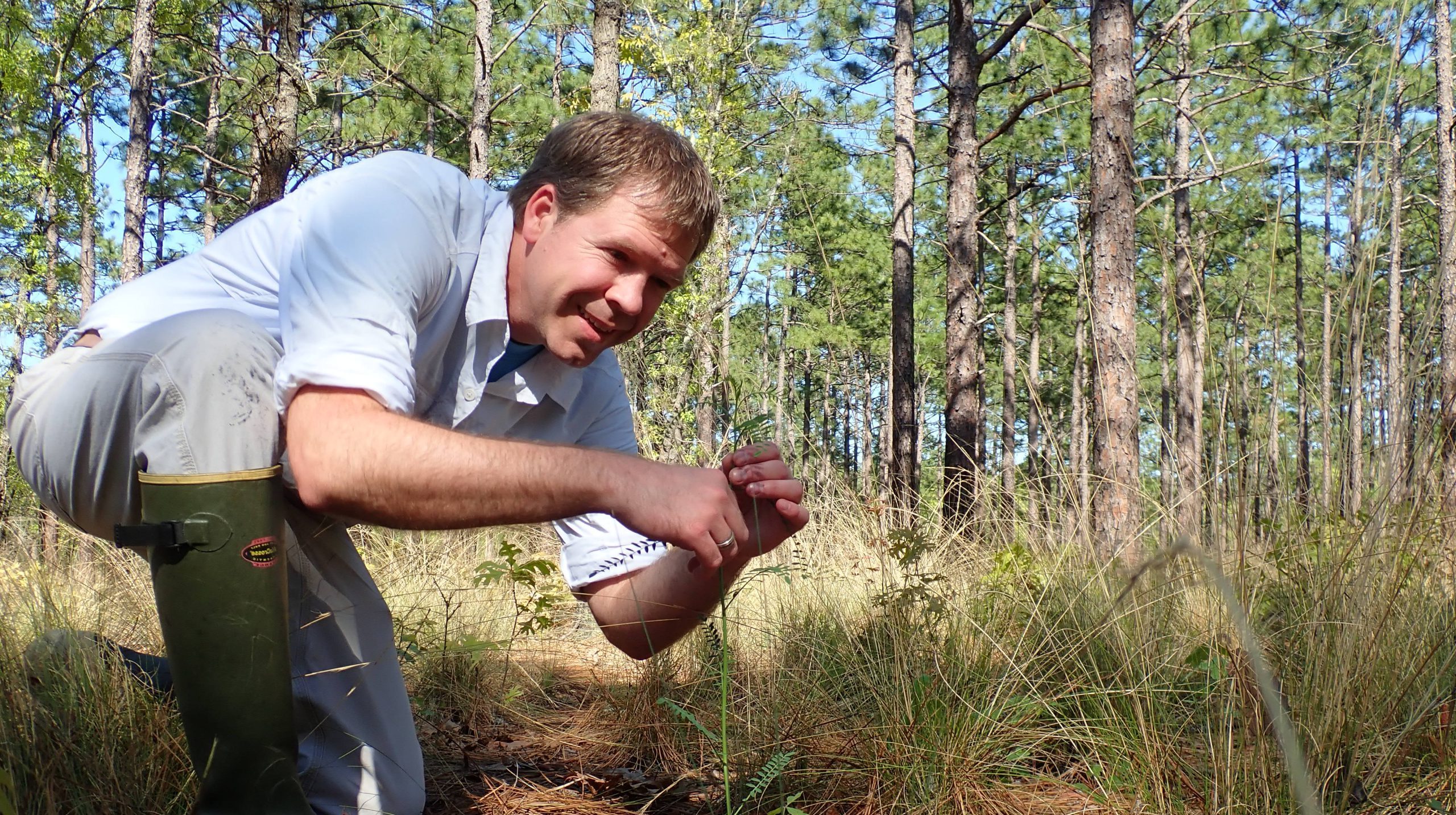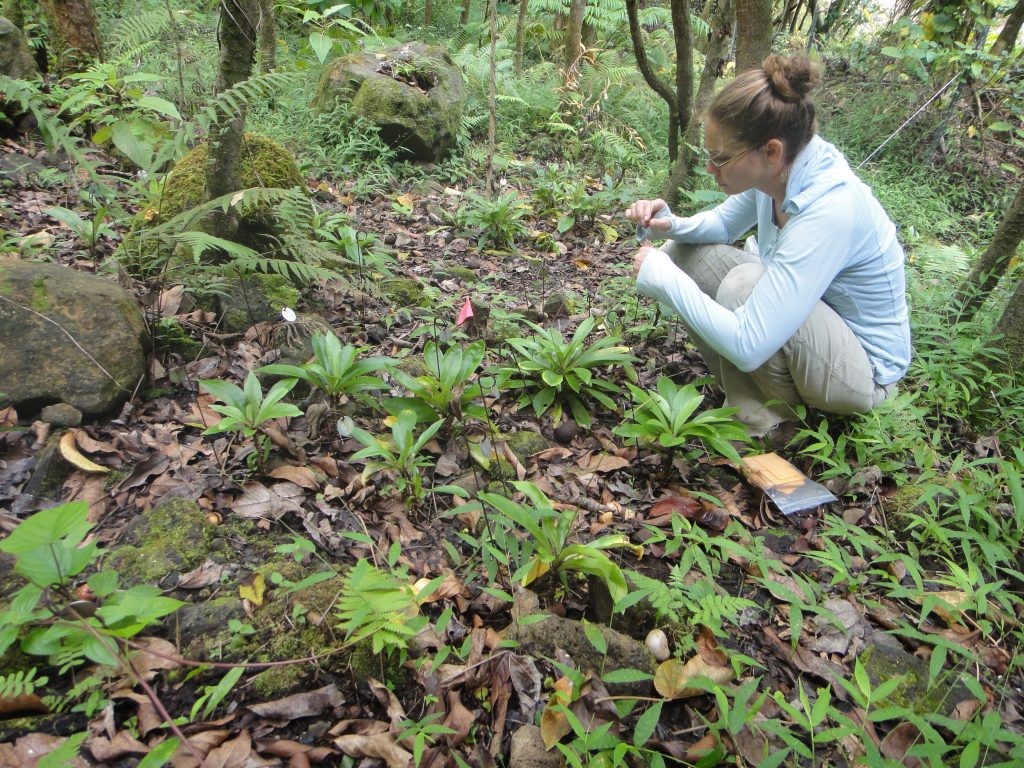CPC Best Plant Conservation Practices
to Support Species Survival in the Wild
to Support Species Survival in the Wild
Two in five plant species are at risk of extinction worldwide. Growing concerns for the loss of plant genetic diversity and species’ extinctions, as well as advancing know-how to make successful conservation collections, motivates CPC network scientists to collect seeds from wild populations and bank them.
The great diversity of plants throughout the world helps define our sense of place and our cultural heritage. Plants have great economic value—providing food, shelter, medicine, and the basis of our livelihoods.
Although humans have been storing seeds for millennia, most of our knowledge about the efficacy of storing seeds derives from plants that have food value. In contrast, we have less knowledge of wild species, and there are great differences in seed traits between crops and wild species. Wild species that are rare and endangered pose conservation challenges to seed banking.
Since 1984, the Center for Plant Conservation (CPC), composed of a network of world-class botanical institutions, has been conducting rare plant species conservation. By 2018, CPC Participating Institutions collectively held over one-third of the globally rare North American plant species (over 1400 taxa) in conservation collections within botanic gardens. In making and using our rare plant collections, CPC scientists have developed expertise and have experienced many triumphs and challenges with conserving endangered plants. Our research on conserving endangered plants has resulted in peer-reviewed publications covering pillars of plant conservation practice including seed storage behavior, germination, propagation, genetics, and reintroduction. For more than 30 years, CPC scientists have collaborated to generate CPC Best Practice Guidelines that form the basis of rigorous plant conservation practice worldwide. We understand nuances of making conservation collections from wild habitats; we document the species’ germination and storage requirements; we adhere to genetic considerations while collecting, maintaining, and reintroducing the species to the wild; and we have expertise in reintroduction science.

If we are to curb plant extinction, there is an urgent need to involve more people in good plant conservation practice. Our updated CPC Best Practice Guidelines reflect updated knowledge about best scientific practices for conserving endangered plants. We wish to overcome barriers for botanical institutions seeking to expand their conservation programs by providing the most up-to-date methodology needed to engage in important plant conservation work. The intention of the CPC Rare Plant Academy is to provide an active channel of communication and learning for emerging and seasoned rare plant curators that can lead to widespread understanding and adoption of best practices, as well as discourse when plant conservation challenges are identified or changes are needed. Ultimately, we know that preventing plant extinction will require more institutions making high-quality rare plant conservation collections in support of species’ survival in the wild.
CPC Rare Plant Academy offers all of us targets we strive to hit in our plant conservation practice. We welcome you to join the conversation and to contribute to the science and to the stories about how practice improves through experience. Please sign up for our online community and leverage our network of rare plant experts.

As you read the sections, you may find unfamiliar terms or concepts that stimulate further questions. We invite you to participate in our discussion forum to get answers from the plant conservation scientists who authored these methods. Bold dark green words will provide a pop-up glossary definition on roll-over. We encourage newcomers to explore additional explanations we provide in Frequently Asked Questions and the Supplementary Materials section or contact us at info@saveplants.org for personalized assistance.
Seed science is a rapidly growing field. To keep abreast of changes in technology and practice, the CPC Best Practices will be a “living” document that is reviewed and updated periodically. These best practice guidelines will be helpful to experienced seed collectors, seed banking experts, and newcomers to rare plant conservation.
Bureau of Land Management. 2016. Technical protocol for the collection, study, and conservation of seeds from native plant species for Seeds of Success.
Center for Plant Conservation, 1996. Guidelines for developing a rare plant reintroduction plan. Pages 453–490 in Restoring diversity. D. A. Falk, C. I. Millar, and M. Olwell, editors. Island Press, Washington, DC.
Falk, D. A., and K. E. Holsinger. 1991. Genetics and conservation of rare plants. New York, Oxford University Press. Food and Agriculture Organization of the United Nations (FAO). 2014. Genebank standards for plant genetic resources for food and agriculture. Rome, Italy. http://www.fao.org/3/a-i3704e.pdf.
Guerrant, E. O., Jr., K. Havens, and M. Maunder, editors. 2004. Ex situ plant conservation: supporting species survival in the wild. Island Press, Washington, DC. Maschinski, J., M. A. Albrecht, L. Monks, and K. E. Haskins. 2012. Center for Plant Conservation best reintroduction practice guidelines.Pages 277–-306 in J. Maschinski and K. E. Haskins, editors. Plant reintroduction in a changing climate: promises and perils. Island Press, Washington, DC.
Millennium Seed Bank Partnership (MSB). 2015. Seed conservation standards for “MSB Partnership Collections.” Royal Botanic Gardens, Kew, UK.
Walters, C. 2015. Orthodoxy, recalcitrance and in-between: describing variation in seed storage characteristics using threshold responses to water loss. Planta 242: 397–406.
Wieland, G. D. 1995. Guidelines for the management of orthodox seeds. Center for Plant Conservation, St. Louis.